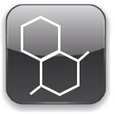Corks
Applications > Home
| Cork for wine in elastomer | ||
To keep the wine, the cork can be a great ally or quite the opposite, because if the wine is of quality, it will be kept and preserved properly and it will be in perfect conditions naturally a lot depends on the quality of the cork. Thanks to its natural characteristics; lightweight, easy to compress, waterproof, resistant to moisture and decomposition, resilient make it an inimitable stopper, protects the wine against temperature variations and prevents it from deteriorating over time. The secret is a complex structure, that no technology has yet managed to reproduce. Each cork is a sophisticated natural valve composed of about 800 million tiny suberin cells (almost 40 million cells per cubic centimeter) filled with a gas similar to air. But its biggest defect is called TCA (Tricloranonisol), which is released by the presence of a fungus that can be found in cork stoppers. When compressed, the cells of the cork behave like a pillow and constantly seek to return to their original size and shape, adapting to the neck and maintaining a watertight isolation. It is the air cells that facilitate the penetration of a minimum amount of oxygen after bottling, having a positive impact on the development of the wine. The cork that is used to close the bottle will depend on the type of wines, younger and the corks will be shorter, older wines, great aging will have longer corks. |  | |
| State of art | ||
The bottled wine has been experiencing for some time the problem of the decrease in the availability of cork, as well as the consequent deterioration of its quality and the proportional increase in the cost. The synthetic stopper has begun to be considered gradually thanks to the lower costs, but also due to the absence of the known problem of cork flavor that ruins a percentage of commercialized bottles. In addition, the constant refinement of the art of wine implies a growing understanding of the phenomena linked to the controlled transpiration of cork; Then we went from an univocal and intermediate response (the cork) to the needs, to a series of responses potentially modulated to the different needs through technologies of controlled and constant transformation. |  | |
| Solutions currently available in the market | ||
Statistically each year approximately 10% of the bottles closed with cork have qualitative problems due to the cork itself. By the way, it is always bottles of wines of superior quality, therefore, with an economic damage higher than the average for the producer. The spectrum of solutions currently available in the market is quite limited. If we think about polymers, we have two large families: TPC-ET, PVC, EVA, SEBS, EPDM, and HDPE expanded and added with plasticizers to bring them to the required low hardness. If we think about transformation technologies, we still have two families: injection and extrusions. The reduced availability of cork, combined with its constant, poorly controlled quality, leads to pressure on closing prices, a pressure that grows in a proportionally inverse manner to the quality of the wine contained. This is the explanation to the market of monolithic low-priced, low-performance plugs, PVC, EVA, SEBS and expanded HDPE, were born quickly in the world. But its quality seems to be inferior to the need in many cases, which remains intermediate between an insufficient synthetic and an excess of cork. This is the theoretically available market area for a synthetic monolithic with long-term O2 oxygen impermeability characteristics in cork-type sealing values. |  | |
| The properties of sulfur dioxide in winemaking | ||
The antimicrobial action of sulfur dioxide, is combined with certain substances and by blocking oxygen, limits the possibilities of nutrition of microorganisms and sulfur dioxide can penetrate the cells and depending on their concentration, can cause the death of these (action fungicide and bactericide) or temporarily inhibit its activity (fungistatic or bacteriostatic action) and then resume its activity when the conditions of the medium allow it. Sulfur dioxide is fungistatic at low concentrations and at high pH, while it is fungicidal at high concentrations and at low pH. The sulfur dioxide concentration of free SO2 is reduced more rapidly in the bottle with cork stopper, as well as the total SO2. This is more evident in white wine than in red wine due to the higher concentration of SO2 in the first. In theory, this means that a lower dose of SO2 can be used in the wine with the synthetic stopper. | ||
| Resistance to O2 permeation | ||
Under pressure and in "dry" conditions, the cork stopper is up to 700 times more permeable to oxygen than the synthetic stopper. In a "wet" condition, the oxygen transpiration is almost identical. This means that the vertical storage of bottles with a cork stopper increases the oxygen permeability and, consequently, reduces the "shelf life", while the synthetic stopper is insensitive to storage conditions. The resistance to O2 permeation must be divided into two areas: Glass wall seal / lid. The greatest permeation occurs here where the cork (reference) is able to provide a fairly constant thrust over time towards the wall if it is kept moist. The thermoplastic materials in use have a gradual decrease in thrust due to natural relaxation in the forced form. In fact, after the extraction, the stopper returns only slightly to the original size. TPC-ET, in the range of operating temperatures, has a high and constant elasticity over time Intrinsic seal of the lid. The permeability of the expanded body is understood. Depending on the wines, a specific permeation would be an interesting solution. Today we begin to see patents that tend to introduce an adjustable valve in monolithic caps or tend to operate with different degrees of expansion. The extruded technology cuts continuously, leaving the two terminals without skin, which allows, better than the monolithic ones, this adjustment. TPC-ET is simply expandable, and the intrinsic permeability of the polymer is adjustable by the formulation Get in touch with food compatibility. The release values in simulating alcohol as in acid simulant must comply with the various national regulations for contact with food fluids. TPC-ET polymers that do not contain plasticizers have been shown to be in line with the most restrictive regulations |  | |
| Maximum oxygen absorption | ||
The maximum absorption of oxygen for wine is generally estimated at 60 ml of oxygen / liter for white wines and between 60 and 180 ml of oxygen / liter in the case of red wines. In practice, after bottling, the wine is not exposed to high levels of oxygen. A good index of the oxidation state of a wine can be considered the content of acetaldehyde, which is one of the main volatile compounds present in wine, depending on its formation directly from the level of oxidation of the wine. On average, red wines contain 30 mg / liter, white wines 80 mg / liter, and Sherry 300 mg / liter. At low levels, acetaldehyde can contribute to the pleasant fruity aromas of a wine; however, at higher levels, the aroma is considered a defect and resembles bad apples. The critical threshold in the different types of wine varies between 100 and 125 mg / liter. Contrary to popular belief, common synthetic stoppers are very permeable to oxygen and are recommended only for wines consumed within two years of bottling. Natural cork is less permeable to oxygen, even if the best barrier to limit contact with oxygen are the screw caps or the new generation technical and technological corks, both synthetic and cork. In particular, a careful quality control of the starting cork is important because it has been found that the permeability of the cork depends to a large extent on the number and size of the intercellular channels whose size can vary from 30 to 100 nm. |  | |
| OTR (oxygen transmission rate) | ||
Currently, the OTR of closures is evaluated using mainly three analytical methods, very different from each other: The MOCOM method performs the measurement of oxygen permeability in closures applied to bottlenecks cut in the base and sealed in a support with a waterproof glue. A flow of nitrogen continuously pushes the air contained in the space of the head towards the measuring system, which in this case is a coulometric sensor. The colorimetric method exploits the ability of the indigo carmine to change the color from the reduced state (yellow) to the oxidized state (blue). The passage of oxygen inside the bottle to which the coloring solution and a reducing agent have been added is done by monitoring the color variation of the solution itself, using a colorimeter. The method based on luminescence consists of applying, within the bottle, a sensor composed of a material based on ruthenium complexes that, when reacting with oxygen, emits a fluorescent light that can be detected through the glass through a reader external. An indicator compound for the oxidation state of a wine is ethyl acetate. Its formation is the result of contamination with Acetobacter spp. The smell is typical of nail polish, generally well distinguishable for amounts greater than 120 mg / liter. The oxygen exposure of bottled wines depends mainly on their quantity in the head space and the entry into the bottle through the closure. | ||
| Products range | ||
Mexpolimeros offer a wide range of SEBS, PVC and TPC-ET and their compounds developed according to your needs, guaranteeing quality in products and service. Oxygen permeability has become one of the most important parameters on which to base the elastomer choices. Although the bottle is generally considered to be a very reducing environment, minimal amounts of oxygen enter through the closures and into the interface of the glass lid. Oxygen permeability or oxygen transmission rate (OTR) is the amount of oxygen that passes through the closure system in a unit of time. The cork (excellent quality) has a permeability of 0.006 cc / 24h, TPC-ET 0.010 cc / 24h, after 3 years, while SEBS has a permeability of 0.030 cc / 24h, therefore, 3 times higher. Cork (excellent quality) These products allow bottling up to 50 years or more. SEBS These products allow bottling for a maximum of 1-2 years. TPC-ET These products allow bottling for a maximum of 5-7 years. | ||
